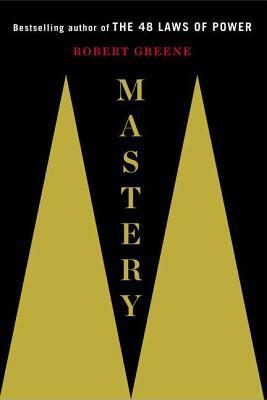More on this book
Community
Kindle Notes & Highlights
What kills the creative force is not age or a lack of talent, but our own spirit, our own attitude.
The Dimensional Mind has two essential requirements: one, a high level of knowledge about a field or subject; and two, the openness and flexibility to use this knowledge in new and original ways.
You must begin by altering your very concept of creativity and by trying to see it from a new angle.
Understand: it is the choice of where to direct his or her creative energy that makes the Master.
your emotional commitment to what you are doing will be translated directly into your work.
The work that you envision will stir up controversy and ruffle some feathers.
First, the task that you choose must be realistic.
it is always best to choose a task that is slightly above you, one that might be considered ambitious on your part.
you must let go of your need for comfort and security.
With our limited senses and consciousness, we only glimpse a small portion of reality.
The mind must be able to feel doubt and uncertainty for as long as possible.
ideas will come that are more dimensional and real than if we had jumped to conclusions and formed judgments early on.
we must be capable of negati...
This highlight has been truncated due to consecutive passage length restrictions.
Truly creative people in all fields can temporarily suspend their ego and simply experience what they are seeing, without the need to assert a judgment, for as long as possible.
This ability to endure and even embrace mysteries and uncertainties is what Keats called negative capability.
Masters possess this Negative Capability, and it is the source of ...
This highlight has been truncated due to consecutive passage length restrictions.
allows them to entertain a broader range of ideas and experiment with them, which in turn makes their w...
This highlight has been truncated due to consecutive passage length restrictions.
cultivating Negative Capability will be the single most important factor in your success as a creative thinker.
entertain ideas that fit your own preconceptions and that you want to believe in.
With this type of bias, you will find the experiments and data that confirm what you have already come to believe in.
what you will often end up expressing is an opinion rather than a truthful observation about reality.
To put Negative Capability into practice, you must develop the habit of suspending the need to judge everything that crosses your path.
You do anything to break up your normal train of thinking and your sense that you already know the truth.
Scientific knowledge is constantly progressing.
Negative Capability should not be a permanent state of mind.
Negative Capability is a tool we use in the process to open the mind up temporarily to more possibilities.
The brain is an instrument developed for making connections.
moments of unstrained attention, when something unexpected enters the mental sphere and triggers a new and fertile connection.
The first step is to widen your search as far as possible.
The second step is to maintain an openness and looseness of spirit.
we do not stop to consider all aspects or details, but instead we see an outline or pattern that fits into our expectations and past experiences.
We fit the event or person into categories.
Creative people are those who have the capacity to resist this shorthand.
the average person does not generally pay attention to what we shall call negative cues,
the ability to alter our perspective is a function of our imagination.
the emotions we experience at any time have an inordinate influence on how we perceive the world.
Language is a system largely designed for social communication.
The grammar of language locks us into certain forms of logic and ways of thinking.
language is a tool that is often too tight and constricting,
visualization is something we create, something that serves our particular needs of the moment and can represent an idea in a way that is more fluid and real than simply words.
This use of images, diagrams, and models can help reveal to you patterns in your thinking and new directions you can take that you would find hard to imagine exclusively in words.
synesthesia—moments in which the stimulation of one sense provokes another.
more prevalent among artists and high-level thinkers.
Creative people do not simply think in words, but use all of their senses, their entire bodies in the process.
If we remained as excited as we were in the beginning of our project, maintaining that intuitive feel that sparked it all, we would never be able to take the necessary distance to look at our work objectively and improve upon it.
awe. Our skeptical, cynical attitudes can actually cut us off from so many interesting questions, and from reality itself.
We naturally begin to take for granted certain ideas
we have learned and developed.
You begin to fall in love with the ideas and strategies that worked for you in the past.
Creativity is by its nature an act of boldness and rebellion.


